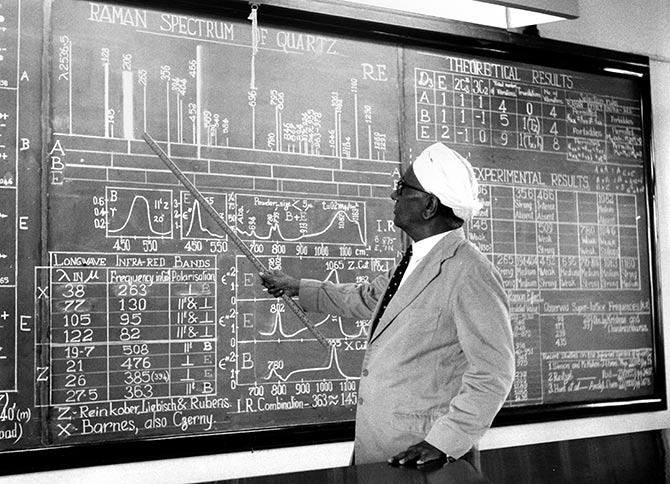How CV Raman's invention is helping detect Covid
June 17, 2021 15:18

Nobel Laureate CV Raman
Researchers have successfully used graphene -- one of the strongest, thinnest known materials -- to detect SARS-CoV-2 in laboratory, a breakthrough which they said can help detect coronavirus and its variants quickly and accurately.
The research team at the University of Illinois Chicago in the US combined sheets of graphene, which are more than 1,000 times thinner than a postage stamp. They applied an antibody to the sheets designed to target the spike protein on the coronavirus, which helps the virus to enter and infect human cells.
The researchers then measured the atomic-level vibrations of these graphene sheets when exposed to COVID-positive and COVID-negative samples in artificial saliva.
These sheets were also tested in the presence of other coronaviruses, like Middle East respiratory syndrome, or MERS-CoV. The study, published in the journal ACS Nano on Tuesday, found that the vibrations of the antibody-coupled graphene sheet changed when treated with a COVID-positive sample, but not when treated with a COVID-negative sample or with other coronaviruses.
Vibrational changes, measured with a device called a Raman spectrometer, were evident in under five minutes, the researchers found. "We have been developing graphene sensors for many years. In the past, we have built detectors for cancer cells and ALS. It is hard to imagine a more pressing application than to help stem the spread of the current pandemic," said Vikas Berry, professor at the University of Illinois Chicago and senior author of the research paper.
"There is a clear need in society for better ways to quickly and accurately detect COVID and its variants, and this research has the potential to make a real difference. The modified sensor is highly sensitive and selective for COVID, and it is fast and inexpensive," Berry said.





 © 2024 Rediff.com -
© 2024 Rediff.com -